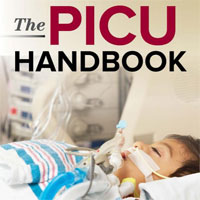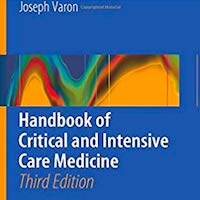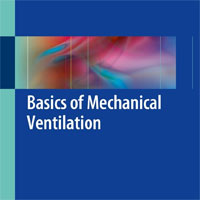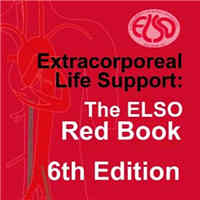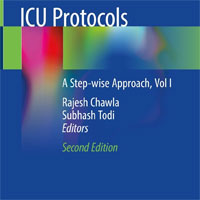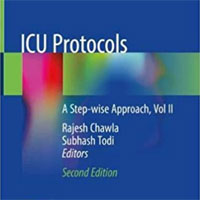Tag: sedation
Impact of Esketamine vs. Remifentanil on Hemodynamics and Outcomes in Mechanically Ventilated Septic Shock
This single-center, prospective, randomized, controlled pilot study compared the hemodynamic effects and prognosis of esketamine versus remifentanil, both used in combination with propofol, for sedation and analgesia in patients... read more
Evaluating Remimazolam for ED Procedural Sedation Effectiveness and Patient Satisfaction
This study evaluated the safety and efficacy of remimazolam, an ultra-short acting benzodiazepine, for procedural sedation in the emergency department (ED). The primary aim was to compare its administration by emergency medicine... read more
Finding the Ultimate Sedative
Critically ill patients requiring invasive mechanical ventilation often need continuous sedation for pain and anxiety. Propofol, a GABA potentiator, and Dexmedetomidine, an α2-adrenergic receptor agonist, are commonly used... read more
Propofol vs. Midazolam Infusion: Effects on Cardiovascular Stability in Critically Ill Patients
A study compared the effects of propofol and midazolam infusions on cardiovascular stability in 75 critically ill patients requiring sedation in the intensive care unit at Azadi and Tikrit Teaching Hospitals from December... read more
Fever Management with or without a Temperature Control Device After OHCA and Resuscitation
the TEMP‐CARE trial will advance our understanding of post‐cardiac arrest care fever management strategies. With a large sample size and a broad patient population, the results of this trial will inform clinical practice... read more
Anesthesia Role in Sedation and Weaning From Mechanical Ventilation
This systematic review highlights the advantages of anesthetic sedation strategies, particularly the use of dexmedetomidine, methadone, or sequential sedation protocols, in improving weaning outcomes, enhancing sedation quality,... read more
Dexmedetomidine Use for Palliative Sedation in Non-ICU Settings
Dexmedetomidine is a promising adjunct to be considered for palliative sedation when managing end-of-life symptoms such as refractory pain, anxiety, or delirium. This medication should be considered a reasonable alternative... read more
Analgosedation Practice During Noninvasive Respiratory Supports
Sedation is frequently used in patients with acute respiratory failure (ARF) undergoing Noninvasive Respiratory Supports (NRSs). Current analgesic practices are becoming more standardized, with analgosedation strategies increasingly... read more
Moderate and Deep Sedation in Clinical Practice
Millions of procedures requiring sedation are performed each year, covering a large array of medical specialties in both inpatient and outpatient settings. This tremendous growth has led to sedation being administered by... read more
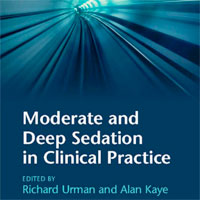
Flow Control Ventilation in ICU
Flow control ventilation is an innovative technique of mechanical ventilation with a potentially lung protective characteristics. The constant inspiratory and expiratory flow, no ventilation pauses, and inspiration to... read more
Dexmedetomidine for Sedation in Pediatric ICU
Audit shows compliance to the standards were not met. A third of the patients required higher doses of up to 2 micrograms/kg/hour of dexmedetomidine. Studies have supported the safety of higher doses of up to 2 micrograms/kg/hour.2... read more
ICU-acquired Weakness: Critical Illness Myopathy and Polyneuropathy
Critical illness myopathy (CIM) and critical illness polyneuropathy (CIP) are significant complications in intensive care unit (ICU) patients, first identified in the late 20th century. These conditions often present... read more
Massive Pulmonary Embolism with Clot in Transit Using Fluoroscopic and Transthoracic Echocardiographic-Guided Large-Bore Mechanical Thrombectomy
Massive pulmonary embolism (PE) is a life-threatening condition caused by the obstruction of pulmonary arteries requiring precise and timely intervention to prevent mortality. Clots in transit (CIT), which are thrombi... read more
Bundle of Care Effectiveness on Tolerance of Awake-prone Positioning in ARF Patients
In the evaluated population of patients with COVID-19-related ARF, implementing a bundle-of-care strategy was associated with a longer AW-PP exposure and a reduced risk of endotracheal intubation. In this secondary analysis... read more
Sedation and Analgesia for the Pediatric Intensivist: A Clinical Guide
This book provides a comprehensive overview on sedation and analgesia for the pediatric intensivist. Divided into two primary sections, the text presents a framework on how to care for patients who need sedation, analgesia,... read more
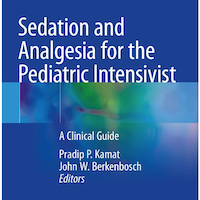
Bedside Procedures in the ICU
This handbook is a guide to best practice in interventions commonly encountered in the ICU. It is clinically orientated providing step-by-step explanations and illustrations of most invasive procedures, check lists to make... read more
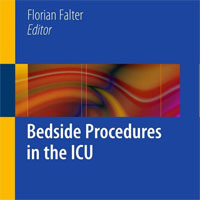
Opioid Use in Critical Care: A Practical Guide
This book provides a concise yet comprehensive overview on the use of opioids in the ICU, offering practical, real-world recommendations on opioid utilization and alternative therapies. The text explains the physiology... read more
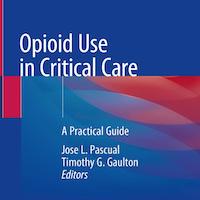
Analgosedation and Delirium Practices in Critically Ill Patients
Before the COVID-19 pandemic, the management of analgosedation was characterized by the predominant use of targeted protocols that favored priority on mild and dynamic sedation in critically ill patients. During the pandemic... read more
Handbook of Evidence-Based Critical Care
This updated and revised edition of the classic bedside pocket reference remains the gold standard in critical care medicine. The new edition maintains Dr. Marik's trademark humor and engaging writing style, while adding... read more
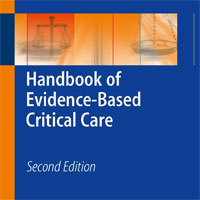
Bedside Tunneled Dialysis Catheter Program Development and Implementation
The placement of ultrasound guided tunneled dialysis catheters at the bedside following a pre-procedural evaluation of the right jugular, brachiocephalic, and femoral veins is a safe option resulting in expedited patient... read more
Increased Sound Levels in the Cardiac ICU Associated with Increased Heart Rate, Blood Pressure, and Sedation
Sound levels in the CICU were consistently higher than recommended. An increase in heart rate, blood pressure and sedation utilization may suggest a stress response to persistent and sudden loud sounds. Given known negative... read more
Multidisciplinary Collaborative Bundled Care Improves Outcomes in ICU Patients with Endotracheal Intubation
Multidisciplinary analgesic and sedative bundled care has demonstrated the potential to decrease restraint use in patients undergoing endotracheal intubation and mechanical ventilation, reduce the need for analgesic and sedative... read more


